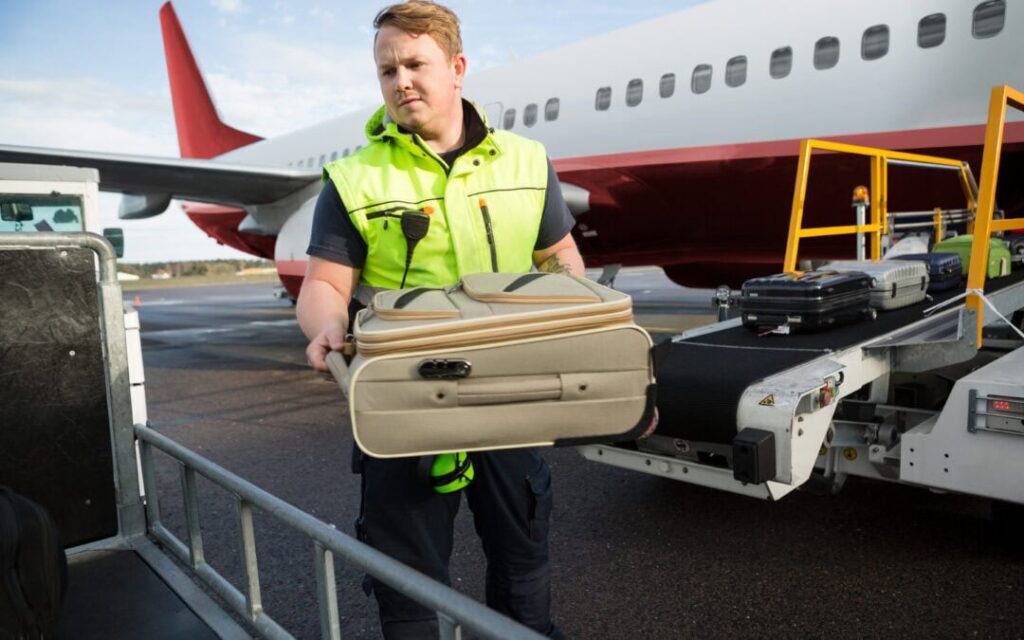The aviation industry is a complex system where numerous elements must work together seamlessly to ensure safety and operational efficiency. One significant aspect of this system is the management of hold baggage, which presents unique challenges and opportunities for improvement. Effective management of hold baggage is critical not only for passenger satisfaction but also for the overall safety and efficiency of airport operations. Here, we explore best practices for managing hold baggage in aviation.
Understanding the Importance of Hold Baggage Management
Hold baggage refers to the luggage that passengers check in before boarding their flights, which is then stored in the aircraft’s cargo hold during the flight. The management of this luggage is crucial for several reasons. Firstly, it directly impacts the passenger experience. Long wait times for baggage claim or lost luggage can lead to dissatisfaction and tarnish the airline’s reputation. Secondly, efficient handling of hold baggage plays a significant role in ensuring security. Each piece of luggage must be screened for prohibited items or substances, and any lapses in this process can pose serious safety risks. Lastly, timely and organized baggage management contributes to the overall efficiency of airport operations, helping to minimize delays and optimize turnaround times.
Implementing Advanced Technology Solutions
Modern technology has revolutionized the way baggage is managed in airports. One of the most effective practices is the use of automated baggage handling systems. These systems streamline the movement of luggage from check-in to the aircraft, reducing the chances of human error and improving efficiency. For instance, RFID (Radio Frequency Identification) technology allows for real-time tracking of baggage throughout the entire journey. By tagging each piece of luggage with an RFID chip, airlines can monitor its location and status, enabling quicker responses to any issues that arise.
In addition to RFID, baggage reconciliation systems ensure that all bags loaded onto an aircraft match the passenger manifest. This practice not only enhances security but also minimizes the risk of mishandling or losing baggage. By integrating these technologies, airlines can significantly improve the accuracy and efficiency of their hold baggage management processes.
Streamlining Check-in Processes
A crucial aspect of managing hold baggage effectively begins at the check-in counter. Streamlining the check-in process can significantly reduce congestion and delays. Self-service kiosks and online check-in options have gained popularity, allowing passengers to check in and tag their bags before arriving at the airport. This reduces the burden on staff and speeds up the process, enabling quicker baggage drop-off.
Airlines can also implement a tiered system for checking in bags based on the passenger’s flight time or seat class. This approach minimizes wait times and spreads out baggage drop-off, allowing for a more efficient flow of luggage to the baggage handling system.
Training and Empowering Staff
Even with advanced technology, the importance of well-trained staff cannot be overstated. Employees tasked with managing hold baggage must have a deep understanding of the processes, technologies, and safety protocols involved. Regular training sessions and simulations can prepare staff for various scenarios, including handling irregularities or emergencies related to baggage.
Empowering staff with the autonomy to make decisions can also lead to enhanced efficiency. For instance, if a staff member notices a potential issue with a piece of luggage, having the authority to investigate or resolve the issue quickly can prevent larger complications later on.
Enhancing Security Measures
The security of hold baggage is paramount in aviation. With the ongoing threat of terrorism and other safety concerns, airports and airlines must remain vigilant in their screening processes. Investing in advanced screening technologies, such as CT (Computed Tomography) scanners, can increase the accuracy of baggage checks while reducing the need for manual inspections. These machines can provide three-dimensional images of the contents of bags, allowing security personnel to identify potential threats more effectively.
Moreover, fostering a culture of security awareness among all staff members is essential. Regular updates on security protocols and ongoing training can help ensure that everyone is on the same page when it comes to identifying and addressing potential security risks associated with hold baggage.
Fostering Collaboration Between Stakeholders
Effective management of hold baggage requires collaboration among various stakeholders, including airlines, airport authorities, and ground handling companies. Establishing clear communication channels is vital for sharing information regarding flight schedules, baggage handling procedures, and any issues that arise during operations. Regular meetings and joint training exercises can help build relationships and improve coordination between these entities, ultimately leading to a more efficient baggage management system.
Moreover, adopting a data-driven approach can enable stakeholders to identify trends and areas for improvement. By analyzing data related to baggage handling times, lost luggage incidents, and customer feedback, airports and airlines can make informed decisions to enhance their operations.
Monitoring and Continual Improvement
Finally, implementing a system for monitoring and evaluating baggage management practices is essential for ongoing improvement. Regular audits of baggage handling procedures can identify inefficiencies and areas that need enhancement. Encouraging feedback from passengers regarding their baggage experiences can provide valuable insights that lead to better service.
Continuous improvement should be a cornerstone of any hold baggage management strategy. By staying adaptable and responsive to industry trends, technological advancements, and changing passenger expectations, airlines and airports can ensure the safe and efficient handling of hold baggage.
In conclusion, the management of hold baggage is a critical component of aviation operations. By embracing technology, streamlining processes, training staff, enhancing security measures, fostering collaboration, and committing to continual improvement, stakeholders can create a more efficient and safe environment for passengers while enhancing their overall travel experience.
Posted inBlog
Best Practices for Managing Hold Baggage in Aviation





